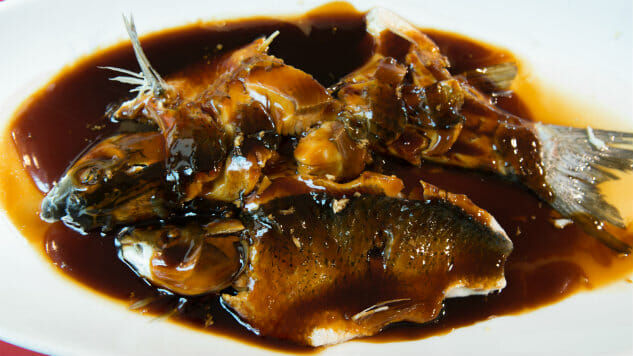5 Heavenly Foods to Try in Hangzhou
Photos by Naomi Tomky
When the morning mist creeps away from Hangzhou’s West Lake, visitors get the chance to peek underneath, where pagodas poke up from fields of green tea leaves along the hill and temples seemingly float in the gray waters. Hidden in those slopes and that water are the ingredients that shape the cuisine of Hangzhou’s Zhejiang province—one of China’s eight culinary traditions.

Chinese tourists crowd into the shores of the lake, a popular domestic destination, but international tourists haven’t yet caught on. With a high-speed train that cuts the trip from Shanghai down to just 45 minutes, the G20 coming in September, and Hangzhou named as one of the places to go in 2016 by both The New York Times and Travel + Leisure, that could be changing very soon. And when it does, Westerners will learn what they’ve been missing out on by skipping Hangzhou and its cuisine.
Marco Polo called Hangzhou,”City of Heaven,” remarking on its numerous markets proffering local wildlife, such as an “abundance of lake fish, varying in kind according to the season … Seeing the quantity on sale, you would imagine they could never be disposed of.” But with dishes like the ones below—and others you’ll find on the streets and in the restaurants—you’ll see how the people of Hangzhou, centuries ago and today, go through incredible quantities of meat, seafood, and local crops.
Longjing Tea Shrimp

Hangzhou’s culinary reputation is built upon freshwater seafood, Dragon Well tea, and refined, elegant cooking. This dish marries all three, earning it a spot as a poster child for local cuisine. Longjing, translated as Dragon Well, tea is grown in the hills just outside Hangzhou, and many connoisseurs consider it the best tea in China—or even the world. For the dish, a few of the tea leaves are stir-fried and tossed with the local freshwater shrimp. The subtle tea flavor just barely makes itself known through the sweetness of the shrimp. Unlike fiery fish dishes from Sichuan or heavy noodle dishes from China’s north, Hangzhou’s Longjing shrimp implores the diner to look for the flavor, inspect it for subtlety and nuance. But like the girl who speaks softly, forcing suitors to lean in close and see just how smooth her skin is, the tea flavor is there—and beautiful—for those who take the time.
Drunken Shrimp

Three times during my first trip to Hangzhou, I accidentally ordered still-moving seafood. While I couldn’t complain about the freshness of the seafood, nor the taste, I wouldn’t have minded skipping the giggles of my husband’s local co-workers as they watched me face off with a drunken shrimp.
The shrimp—about the size of my pinky finger—are dropped live into liquor to drink themselves to a delicious death. Once they’re good and wasted—like you and me, they get a bit thirsty when they’re smashed—they drink up the sauce. I picked them from a photo menu, where they looked plump and pink and (most important) already dead. When they arrived, both the Chinese and Americans at the table backed away slowly. Nobody wanted to be the first to try them—especially not after someone grabbed one and put it on my plate, where it slapped its tail, splashing the red sauce all over my white plate. But then one guy took a bite. I took a bite. We pulled the heads off with our chopsticks and pulled out the meat, sweet freshwater shrimp, seasoned with the sauce they drank in as they died. It was a bit morbid—but also morbidly good.
-

-

-

-

-

-

-

-

-

-

-

-

-

-

-

-

-

-

-

-

-

-

-

-

-

-

-

-

-

-

-

-

-

-

-

-

-

-

-

-











































